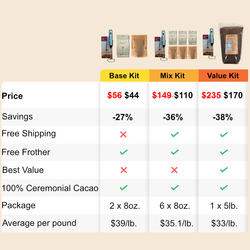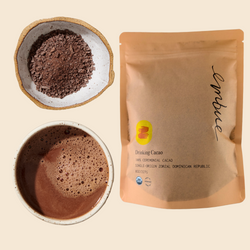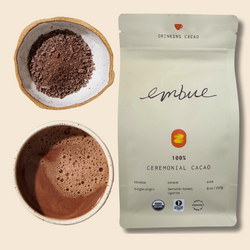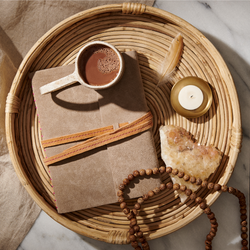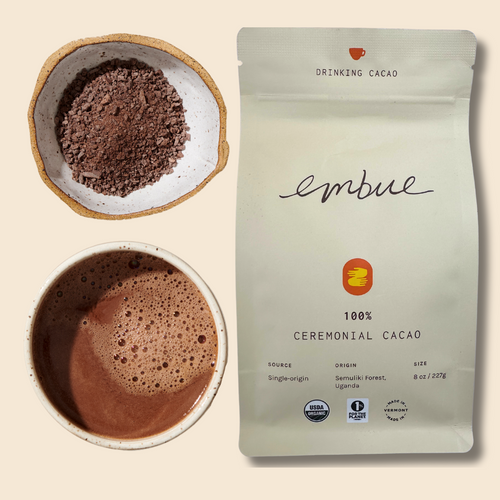Post-Harvest Processing: Fermentation & Sun-drying
To go from the cacao fruit to what we know of as chocolate, there are many steps involved and each one has a major influence on the end product, both in taste and in chemical make-up. Once the fruit of the cacao tree is ripe, the pods are harvested and cut open. Inside are 30-50 seeds, covered in a white pulpy substance, the fruit of the cacao tree. The entire inner contents are brought wet to a central facility where fermentation and sun-drying happen.
If you were to taste the seed raw, right from the fruit, you might wonder if it had any relationship to chocolate, one of its end products. The fresh seed is bitter with almost no hint of chocolate flavor. It contains tannins, phytic acid & oxalic acid, all of which are unpalatable and unhealthy to consume in any quantity. It is all of the steps after harvest that produce the wonderful thing we know of as chocolate, including drastically reducing the compounds which make cacao unattractive in its raw form.
To ferment the cacao, the wet beans are placed in sizeable piles inside some kind of container (like a wooden box topped with banana leaves). The sweet pulp and its sugars create an environment in which fermentation can happen. The piles of wet, fermenting beans are turned on various schedules (depending on things like ambient temperature, variety of cacao, consistency of the beans and sugar content of the pulp) until 80-90% of the beans are fully fermented.
During fermentation, important enzymatic changes occur that make the bean usable for chocolate-making. Fermentation is both a highly specialized, and under-appreciated aspect of cacao production. Cut tests are performed to check that consistency of fermentation through each batch. It takes training to recognize what a bean looks like in the various stages of fermentation, from unfermented to over-fermented or moldy.
It can take anywhere from 2-8 days to properly ferment cacao beans, depending on the variety.
After fermentation is complete, the beans are moved to a drying location. Often this happens on a concrete pad where the mix of tropical sun and thermal mass, along with adequate air flow, creates an ideal environment for drying.
Once the drying is complete, the bean is ready for the next steps in journey of chocolate making. Most cacao is shipped in this form, as whole beans with husk on.
These essential steps of post-harvest processing are often over-looked as farmers and local cooperative associations aren’t seeing any additional income from the extra processing work and possible risk of losing the crop when not done properly. In these situations, cacao is simply washed after harvest and dried for sale. Sadly, much of the potential of the cacao is lost when this happens.
Our source helps train and provide financial incentive to farmers and local associations to take post-harvest processing seriously. Once they have the skills and infrastructure to do it properly, they get a premium price for the resulting high quality cacao.
For us, it’s a win-win, because we get the high quality we want, and farmers earn a premium for their labor.
